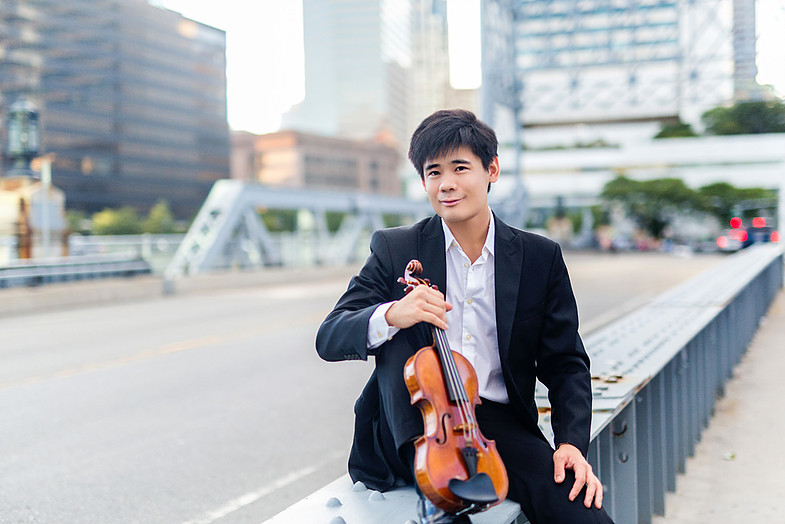
By Dennis D. Rooney
Beethoven’s Violin Concerto, centerpiece of the opening program in the South Florida Symphony’s 21st season, was by far the most interesting performance of the evening Saturday at the Spanish River Worship Center in Boca Raton.
The soloist, 28-year-old Angelo Xiang Wu, a native of Inner Mongolia, was educated at the Shanghai Conservatory and won a scholarship to the New England Conservatory, where he studied with Miriam Fried, Donald Weilerstein and Kim Kashkashian.
In 2006, he was the youngest prizewinner ever at the Wieniawski International Violin Competition. He was awarded Third Prize at the Michael Hill International Violin Competition in 2011, one year after he won First Prize at the Yehudi Menuhin International Violin Competition. This season, he is performing in New York with the Lincoln Center Chamber Music Society’s CMS2.
Playing a 1729 Stradivari on loan from an anonymous donor, Wu did not display a big tone, but his playing had often striking tonal beauty and refinement. His approach was far more lyrical than heaven-storming, with suave bowing, and silky piano and pianissimo playing that nourished the Kreisler cadenza of the opening Allegro ma non troppo and exquisitely decorated the melodies of the Larghetto.
Nevertheless, the performance was one very much “in progress,” as those virtues already described coexisted with phrasing that was often perfunctory and occasionally darkened by small lapses in intonation. With the commencement of the Rondo finale, however, the performance suddenly acquired a propulsiveness and expressive intensity that were often absent in the preceding movements. Despite the flaws, it was a welcome account for being unconventional without being eccentric. Gluck’s Melody in D minor from his opera Orfeo ed Euridice was the encore.
Music of Samuel Barber opened the program, which was led by conductor Sebrina Maria Alfonso. Barber’s First Essay for Orchestra (Op. 12), completed in the first half of 1938, is in one movement. It was given its first performance by Arturo Toscanini and the NBC Symphony Orchestra on a broadcast of Nov. 5, 1938, that also presented the first performance of the expanded version of the composer’s Adagio for Strings. The Essay’s 8-minute length opens with elegiac gestures similar to those of the Adagio, and uses harmonic suspensions and chorale textures prominently. An introspective rather than heroic statement, its soft ending suggests equivocation.
Antonín Dvořák’s New World Symphony (No. 9 in E minor, Op. 95) closed the program rather unimpressively. The problem may have been the room, whose acoustics did not seem to favor the players. A lack of dynamic contrast meant that tuttis lacked impact, making the music sound one-dimensional. The very familiarity of the work may have also highlighted the lack of careful balance, ensemble precision and often sufficient musical character that marked too much of the performance. The Largo, with its famous English horn melody, tends to flag if musical impulse slackens, making one inclined to such heretical thoughts as that Dvořák did not fill every page of the score with top-flight invention.
As he himself inveighed against observance of repeats in familiar works, he might agree that after 125 years of fame his New World might profitably be shorn of a few hundred measures. Such thoughts intrude when a listener fails to be engaged. A better-sounding room and at least one more rehearsal might have swept such fancies aside.